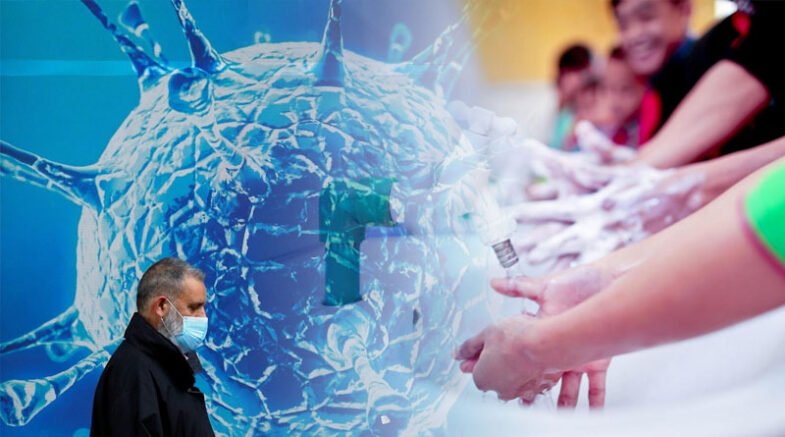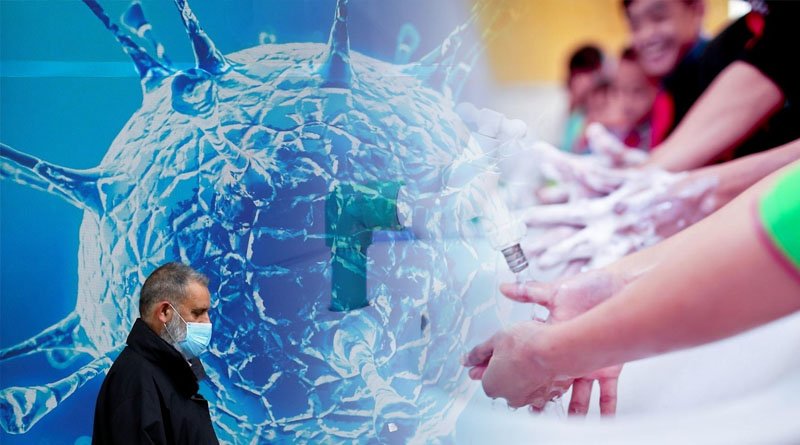A crucial step in fighting COVID-19 has been the development of vaccines, including several that are authorized for emergency use only.

The fighting COVID-19 outbreak, which was caused by a new coronavirus, has had a big effect on the whole world. The word “corona” means “crown,” referring to the appearance that the coronaviruses get from the spike proteins sticking out of them. The virus was first identified in Wuhan, China, in December 2019; its name is due to its shape (appearance) under a microscope.
It quickly spread around the world and became a pandemic that affected almost every country and caused a lot of sickness, death, and economic problems. As a result, governments, organizations, and people all over the world have taken different steps to stop the virus from spreading and lessen its effects.
SARS (severe acute respiratory syndrome) is a type of coronavirus discovered in 2002 and 2003. It causes coronavirus disease. In March 2020, WHO declared COVID-19 a pandemic.
Symptoms
One of the primary ways that countries are fighting COVID-19 is by implementing measures to slow its spread. When affected people cough or breathe out, they dismiss the tiny droplets that enter the mouth or nose of the other person, who is uninfected. The ways of its spread was through close contact, with the infected person.
Sometimes a person suffering from COVID-19 does not show any symptoms and becomes a carrier and spread the disease. Droplets can also be found on a surface or object. This has included measures such as lockdowns, travel bans, and quarantines. Many countries have also implemented strict social distancing measures, such as closing non-essential businesses and limiting gatherings to small numbers of people.
The common symptoms of COVID-19 are:-
- Fever, breathlessness, a cough, sore throat, headache, muscle pain, chills, loss of taste or smell. These symptoms happen 2–14 days after exposure to the Virus.
- People who suffer with severe Coronavirus are mostly elders or the person suffering from any medical illness. Such as serious heart conditions, kidney disease, obesity, sickle cell disease, person with a weakened immune system, type 2 diabetes etc. It is avoided by antiviral vaccinations, but it was quite a hustle to vaccinate the entire world. Other measures taken were washing hands for 20 second, using hand sanitizer, self-isolation, covering of face through mask. Due to COVID-19 people were affected not only physically but also mentally because of the world lock down, shortage of supplies, shortage of jobs resulting in economic problems.
- COVID-19 had a big impact on the mind of the people suffering from it, most of the people has become depressed and socially awkward.
- COVID-19 has caused over 2 Million deaths worldwide. The mortality rate varies from country to country, from person to person. A severe case of COVID-19 leads to multiple organ failure and the affected person dies. During the pandemic, people should also follow these even if they are not suffering from the disease, i.e. stay home whenever possible, avoiding contacts from other people, wearing a face mask covering face in public, staying at least 6ft away from others in public places. The person suffering from COVID-19 should, themselves and the persons they were in close contact with, rest until the symptoms have passed if the symptoms worsen consult a doctor and get a thorough checkup.
- Coronavirus are present in humans and other animals, and some types can cause severe illness. The common cold is one illness that can result from a Coronavirus. Other include SARS, MERS and COVID-19. Scientists continue to investigate Coronaviruses and monitor for new types and outbreaks.
Solutions
These measures have been successful in slowing the spread of the virus in many places but have also had a significant impact on the economy and people’s livelihoods.
Another key way that the world is fighting COVID-19 is through ramping up testing and contact tracing. This has been critical in identifying and isolating people who are infected with the virus and in preventing its further spread. Many countries have also put in place large-scale testing programs, such as rapid antigen tests, to find and isolate infected people quickly.
In addition to these steps to protect public health, governments and organizations all over the world have also taken steps to lessen the effects of the pandemic on the economy. This has included things like giving businesses and people money and putting together stimulus packages to help the economy get better.
A crucial step in fighting COVID-19 has been the development of vaccines. Several vaccines have been developed and authorized for emergency use, including those from Pfizer-BioNTech, Modern, AstraZeneca, and Johnson & Johnson. These vaccines have been shown to be highly effective in preventing serious illness and death from COVID-19 and have been administered to millions of people around the world.
Vaccine
The vaccines have been a key part of the fight against COVID-19, and as a result, the number of cases and deaths has been going down steadily around the world. The vaccines have also helped to ease the burden on health care systems and have allowed some countries to ease restrictions.
Despite these efforts, fighting COVID-19 is far from over. The virus is still spreading in many parts of the world, and new types have appeared that may be easier to spread or resistant to vaccines that are already available. Additionally, the economic impact of the pandemic continues to be felt by many people around the world.
To keep fighting COVID-19, governments, organizations, and individuals will need to keep putting in place public health measures and giving financial support. It will also be important to keep an eye on how the virus spreads and be ready to deal with new problems as they come up. And, of course, the vaccines will continue to be given to as many people as possible.
Conclusion
In the end, the fight against COVID-19 has been a global effort that has required governments, organizations, and people from all over the world to work together and coordinate their efforts. Even though there have been a lot of problems, there have been a lot of successes thanks to public health measures, testing, tracking down contacts, and making and giving out vaccines. However, the fight against COVID-19 is not over yet, and continued efforts will be necessary to bring the pandemic to an end.
It has now been over three years since the pandemic began, and statistics are becoming available that quantify the year-on-year impacts of this terrible crisis and begin to hint at what a recovery and “post-COVID” world might look like. Some key findings include:
- 8 percent of global working hours were lost in 2020, equivalent to 255 million full-time jobs, an amount that is four times greater than the job losses during the 2009 financial crisis.
- COVID-19 is estimated to have pushed 119-124 million people into poverty in 2020, a substantial increase from earlier estimates.
- Aviation passenger traffic declined by 60 percent in 2020, while shipping activity—as measured by vessel port calls—likely declined by around 10 percent.
- The Human Development Index recorded its first drop since 1990 due to the pandemic, which has erased decades of progress in the female labor participation rate.
- International tourism recorded its worst year ever on record; international tourism declined by 74 percent.
